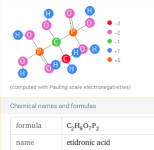If you do not drain, then the iron stays in the water and it eventually comes back out as a stain.
Ascorbic acid only "unoxidizes" the iron, but the iron stays in the water.
Iron "rusts" and oxygen and chlorine in the water will cause it to rust or oxidize again.
It might stay nice for a day, week, month or year depending on the circumstances.
There's no telling how long it will stay nice and when the stains will come back.
If your water supply has high iron levels, then you have to remove the iron before filling with some sort of filter.
Maybe try a treatment without draining to see how well it goes and how long it lasts.
If necessary, you can always do it again and drain if necessary.
Most pools that float seem to be in Florida, so be very careful to verify that draining will not cause damage to the pool.
Note that different metals have different reactions to different treatment chemicals and some reactions can be bad and make the stains worse.
You might have copper, silver, manganese etc. in addition to iron.
So, each metal might react differently and it might turn out well or it might do nothing or it might make the stains worse.
Ascorbic acid only "unoxidizes" the iron, but the iron stays in the water.
Iron "rusts" and oxygen and chlorine in the water will cause it to rust or oxidize again.
It might stay nice for a day, week, month or year depending on the circumstances.
There's no telling how long it will stay nice and when the stains will come back.
If your water supply has high iron levels, then you have to remove the iron before filling with some sort of filter.
Maybe try a treatment without draining to see how well it goes and how long it lasts.
If necessary, you can always do it again and drain if necessary.
Most pools that float seem to be in Florida, so be very careful to verify that draining will not cause damage to the pool.
Note that different metals have different reactions to different treatment chemicals and some reactions can be bad and make the stains worse.
You might have copper, silver, manganese etc. in addition to iron.
So, each metal might react differently and it might turn out well or it might do nothing or it might make the stains worse.





